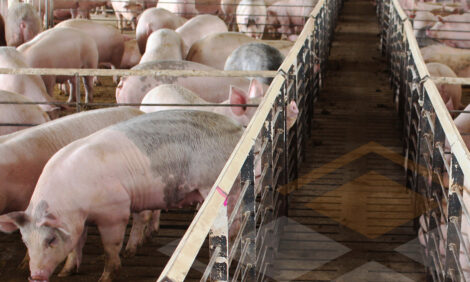



China Pork Industry Overview, September 2004
By USDA Foreign Agricultural Service - This article provides the pork industry data from the USDA FAS Livestock and Products Annual 2004 report for China. A link to the full report is also provided. The full report include all the tabular data which we have omitted from this article.Report Highlights
Since December 25, 2003, China has banned imported US beef and products due to the single BSE case in the United States. It is still uncertain when China will reopen the market. China’s demand for dairy and beef cattle, now supplied by only Australia and New Zealand, is due to the country’s booming dairy sector driven by rising consumption of both dairy products and beef. China’s consumption of beef and pork is forecast to continue climbing due to strong growth in per capita income.
Swine and Pork Market Summary
Pork production for 2005 is forecast to increase from 47 MMT to 49 MMT. Farmers continue
to increase pork production due to strong consumer demand driven by China’s rising
incomes. Pork imports in 2005 are forecast at 88,000 MT, a decline from 2004 as the result
of increased domestic supplies. Exports during 2005 are forecast to increase from 357,000
MT to 450,000 MT due to strong demand from Hong Kong, North Korea and Japan. China
lost export share to Russia due to its quota import quota limit, but this loss will be
compensated by export gains in the other markets.
During 2004 China announced a new import meat quarantine regulation (please refer to FAS
Beijing’s report CH4032). Effective November 1, 2004, all meat and poultry products reexported
through Hong Kong must be pre-inspected by the China Inspection Company
based in Hong Kong before entering the mainland. The purpose of the new law is to reduce
smuggling of products. The new regulation could potentially benefit US meat because non-
US meat often enters China in US carton boxes accompanied by a false U.S. export
certificate after repackaging in Hong Kong. The new inspection policy could also lead to
more direct imports into Mainland China.
To derive trade figures, FAS Beijing uses the Global Trade Atlas (GTA) data provided by the
USDA, and then we add Hong Kong re-exports to the mainland from World Trade Atlas
(WTA) data. China’s customs data no longer provides re-exports from Hong Kong. End
summary.
To view the full report, please click here (PDF)
Source: USDA Foreign Agricultural Service - September 2004






